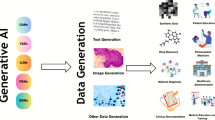Abstract
Healthcare systems need to share information within and across the boundaries in order to provide better care to the patients. For this purpose, they take advantage of the full potential of current state of the art in healthcare standards providing interoperable solutions. HL7 V3 specification is an international message exchange and interoperability standard. HL7 V3 messages exchanged between healthcare applications are ultimately recorded into local healthcare databases, mostly in relational databases. In order to bring these relational databases in compliance with HL7, mappings between HL7 RIM (Reference Information Model) and relational database schema are required. Currently, RIM and database mapping is largely performed manually, therefore it is tedious, time consuming, error prone and expensive process. It is a challenging task to determine all correspondences between RIM and schema automatically because of extreme heterogeneity issues in healthcare databases. To reduce the amount of manual efforts as much as possible, autonomous mapping approaches are required. This paper proposes a technique that addresses the aforementioned mapping issue and aligns healthcare databases to HL7 V3 RIM specifications. Furthermore, the proposed technique has been implemented as a working application and tested on real world healthcare systems. The application loads the target healthcare schema and then identifies the most appropriate match for tables and the associated fields in the schema by using domain knowledge and the matching rules defined in the Mapping Knowledge Repository. These rules are designed to handle the complexity of semantics found in healthcare databases. The GUI allows users to view and edit/re-map the correspondences. Once all the mappings are defined, the application generates Mapping Specification, which contains all the mapping information i.e. database tables and fields with associated RIM classes and attributes. In order to enable the transactions, the application is facilitated with the autonomous code generation from the Mapping Specification. The Code Generator component focuses primarily on generating custom classes and hibernate mapping files against the runtime system to retrieve and parse the data from the data source—thus allows bi-directional HL7 to database communication, with minimum programming required. Our experimental results show 35–65% accuracy on real laboratory systems, thus demonstrating the promise of the approach. The proposed scheme is an effective step in bringing the clinical databases in compliance with RIM, providing ease and flexibility.









Similar content being viewed by others
References
Doan, A., Domingos, P., & Halev, A. (2003). Learning to match schemas of data sources: a multi-strategy approach. Machine Learning, 50(3), 279–301.
Smith, B., & Ceuster, W. (2006). HL7 RIM: an incoherent standard. Studies in Health Technology and Informatics, 133–138.
Boyer-Moore Algorithm. http://www-igm.univ-mlv.fr/~lecroq/string/node14.html.
caAdapter. https://cabig.nci.nih.gov/tools/caAdapter.
Wu, C., & Hadzic, M. (2008). Creating Interoperability within Healthcare Industry. 6th IEEE International Conference on Industrial Informatics. INDIN 2008. Daejeon, Korea, pp. 1341–1346.
Aumueller, D., Do, H.-H., Massmann, S., & Rahm, E. (2005). Schema and ontology matching with COMA++. Proceedings of the ACM SIGMOD international conference on Management of data, pp. 906–908.
Rahm, E., & Bernstein, P. A. (2001). A survey of approaches to automatic schema matching. Universit¨at Leipzig, Institut f¨ur Informatik, 04109 Leipzig, Germany, Microsoft Research, Redmond, WA, pp. 98052–6399, USA.
Health Level 7. http://www.hl7.org.
Hibernate. www.hibernate.org.
HL7 JavaSIG. http://aurora.regenstrief.org/javasig.
HL7 Reference Information Model. (2003). ANSI/HL7 V3 RIM, R1-2003.
Laboratory Domain, HL7 UK V3 Lab, R1, Affiliate Ballot, V3 Guide (2011). http://www.hl7.org/v3ballot/html/index.htm.
Laboratory Domain. (2008). HL7 V3 Lab, R1, Ballot.
Lyman, J., Pelletier, S., Scully, K., Boyd, J., Dalton, J., Tropello, S., et al. (2003) Applying the HL7 reference information model to a clinical data warehouse. Volume: 5, pp. 4249–4255 vol. 5.
MS Biztalk Server. http://www.microsoft.com/biztalk/techinfo/tips/mapper/default.mspx.
N-gram. http://en.wikipedia.org/wiki/N-gram.
OpenEMR. http://www.oemr.org/.
Principle of Locality. http://en.wikipedia.org/wiki/.
RegularExpressions. http://www.regexbuddy.com/regex.html.
Umer, S., Afzal, M., Hussain, M., Ahmad, H. F., & Latif, K. (2009). Design and implementation of an automation tool for HL7 RIM-to-Relational database mapping. 10th International HL7 Interoperability Conference (IHIC), pp. 111–116, Kyoto Japan.
Umer, S., Afzal, M., Hussain, M., Ahmad, H. F., & Latif, K. (2010). Design and implementation of an automation tool for HL7 RIM-to-relational database mapping. 11th International HL7 Interoperability Conference (IHIC), Brazil.
Sujansky, W. (2001). Heterogeneous database integration in biomedicine. Journal of Biomedical Informatics, 285–298.
XML database. http://lists.xml.org/archives/xml-dev/200010/msg00211.html.
Acknowledgement
This work is part of Health Life Horizon Project supported by National ICT R&D Fund, Pakistan under reference number ICTRDF/TR&D/2008/47.
Author information
Authors and Affiliations
Corresponding author
Rights and permissions
About this article
Cite this article
Umer, S., Afzal, M., Hussain, M. et al. Autonomous mapping of HL7 RIM and relational database schema. Inf Syst Front 14, 5–18 (2012). https://doi.org/10.1007/s10796-011-9309-x
Published:
Issue Date:
DOI: https://doi.org/10.1007/s10796-011-9309-x




